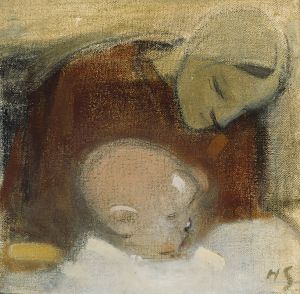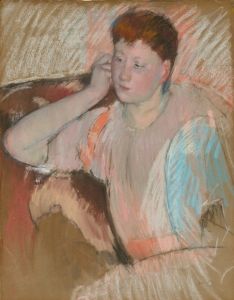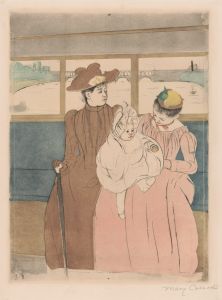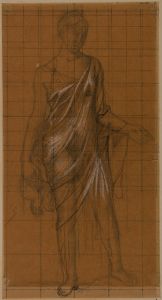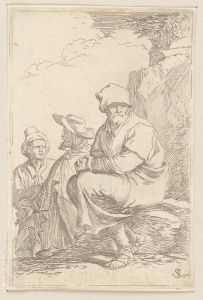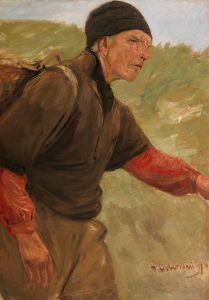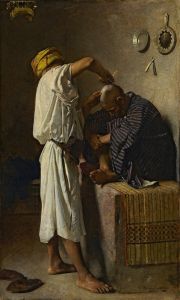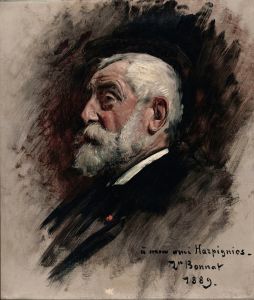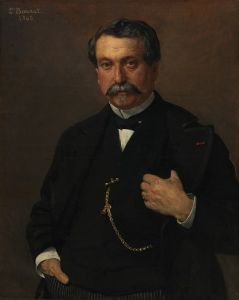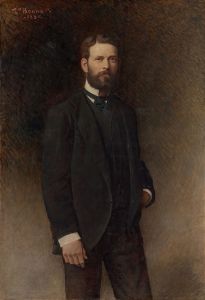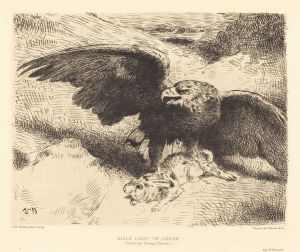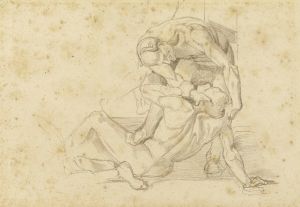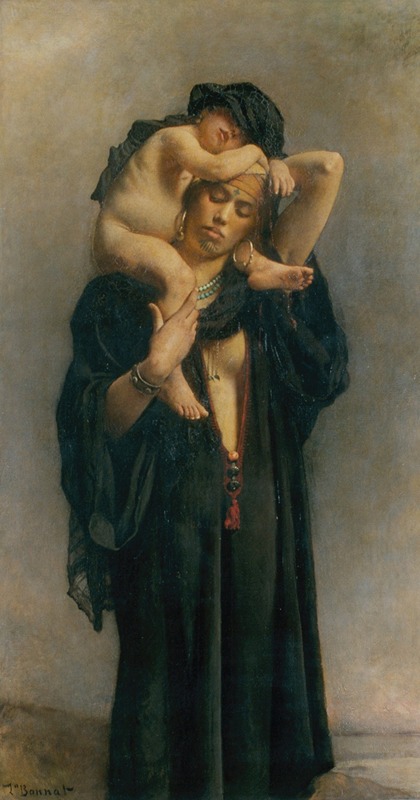
An Egyptian Peasant Woman and Her Child
A hand-painted replica of Léon Bonnat’s masterpiece An Egyptian Peasant Woman and Her Child, meticulously crafted by professional artists to capture the true essence of the original. Each piece is created with museum-quality canvas and rare mineral pigments, carefully painted by experienced artists with delicate brushstrokes and rich, layered colors to perfectly recreate the texture of the original artwork. Unlike machine-printed reproductions, this hand-painted version brings the painting to life, infused with the artist’s emotions and skill in every stroke. Whether for personal collection or home decoration, it instantly elevates the artistic atmosphere of any space.
An Egyptian Peasant Woman and Her Child is a painting by the French artist Léon Bonnat. Created in 1872, this artwork is an example of Bonnat's interest in depicting scenes of everyday life and his fascination with the cultures he encountered during his travels. The painting portrays a peasant woman from Egypt holding her child, capturing a moment of maternal care and human connection.
Léon Bonnat (1833–1922) was a prominent 19th-century French painter known for his portraits, historical scenes, and genre paintings. He was particularly celebrated for his ability to render realistic and emotionally resonant depictions of his subjects. Bonnat traveled extensively during his career, including to the Middle East and North Africa, where he drew inspiration from the people and landscapes he encountered. These travels influenced many of his works, including An Egyptian Peasant Woman and Her Child.
The painting is characterized by its detailed and naturalistic style, which was a hallmark of Bonnat's work. The woman is depicted wearing traditional Egyptian clothing, and her expression conveys a sense of quiet strength and dignity. The child, cradled in her arms, adds an intimate and tender element to the composition. The background is relatively simple, focusing attention on the figures and emphasizing their humanity.
An Egyptian Peasant Woman and Her Child reflects the 19th-century European interest in Orientalism, a term used to describe the fascination with and depiction of Middle Eastern, North African, and Asian cultures in Western art and literature. While Orientalist works often romanticized or stereotyped their subjects, Bonnat's painting is notable for its respectful and empathetic portrayal of the woman and her child.
The painting is currently housed in the Musée Bonnat-Helleu in Bayonne, France, a museum dedicated to Léon Bonnat's works and collections. The museum holds a significant number of his paintings, drawings, and other artworks, as well as pieces from his personal art collection.
An Egyptian Peasant Woman and Her Child remains an important example of Bonnat's artistic legacy and his ability to capture the universal themes of motherhood and human dignity through his art.





